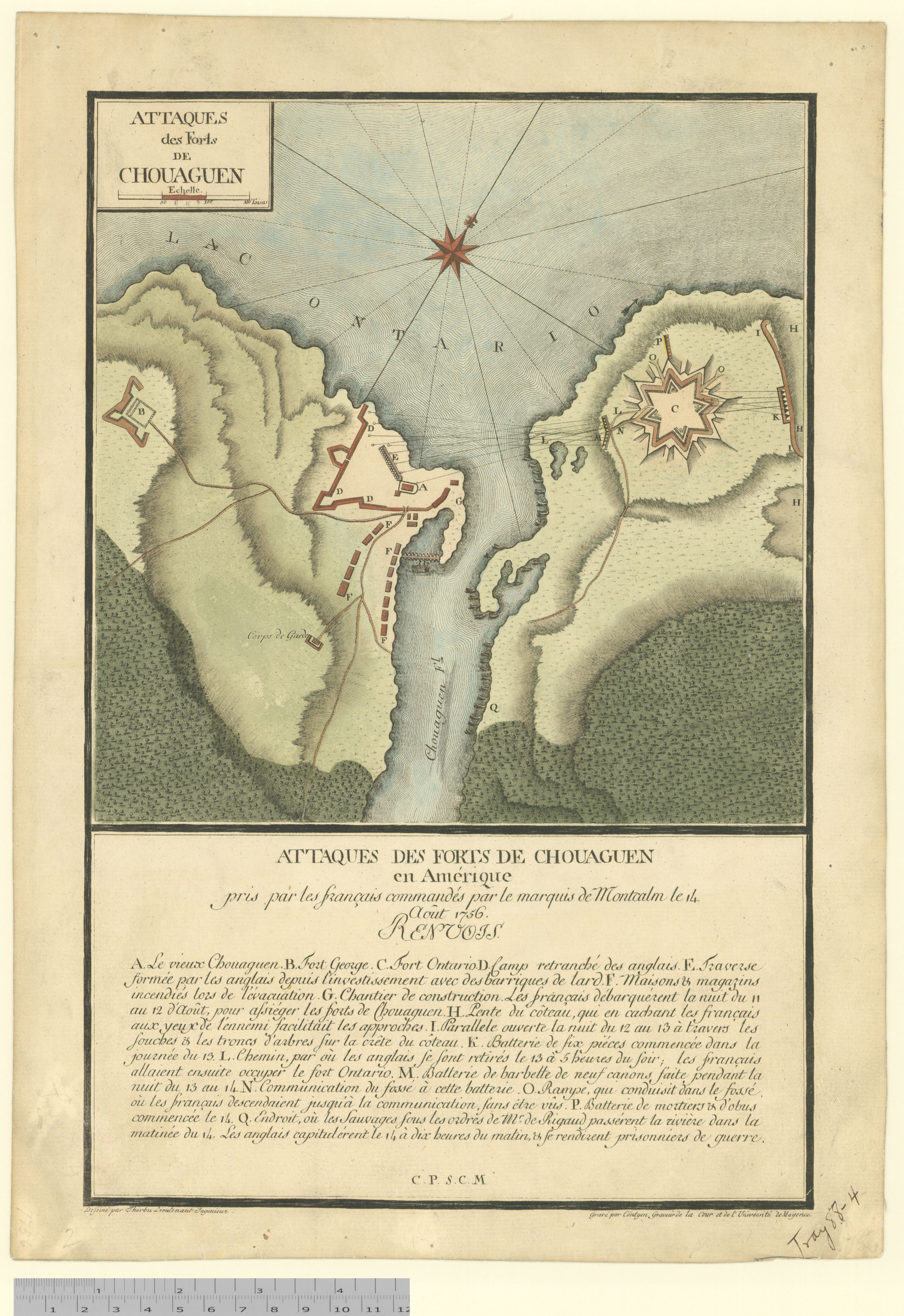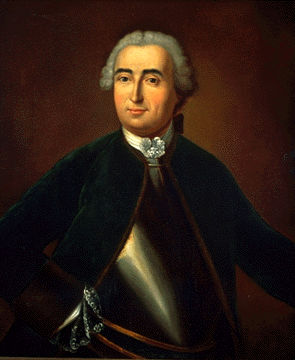The siege of Fort Oswego took place in August 1756, during the Seven Years’ War. During his first campaign on American soil, the Marquis de Montcalm and his French troops easily captured Fort Oswego and Fort Ontario from British defenders. The battle was the first European-style siege by the French in North America.

Strategic Background
From the 17th century, French colonial authorities established forts around Lake Ontario. The aim was to protect access to Montreal and to reinforce diplomatic ties with the Indigenous peoples, especially through the fur trade. (See Fur Trade in Canada.)
At the beginning of the 1720s, Lake Ontario also regularly attracted the attention of British merchants who wanted to trade with the Haudenosaunee. The British built a temporary settlement in the Oswego River area, southeast of the lake. The Indigenous peoples visited this post, abandoning the French ones. The British built Fort Oswego in 1727, west of the river, making their presence on Lake Ontario shores permanent.
In addition to the fur trade, the British also saw geostrategic advantages in this fort: it cut off French access to Albany, the second largest city in the colony of New York, and could be used to launch an attack on Fort Niagara.
To reinforce their strategic position and overcome the weaknesses of the first fort, the British built two other forts nearby: Fort Ontario and Fort George. Fort Ontario was located east of the Oswego River, while Fort George was west of Fort Oswego.
Vaudreuil Project
Starting in 1755, the Governor of New France, Pierre de Rigaud de Vaudreuil de Cavagnial, sought to rid the colony of the threat posed by the three forts. In 1756, the governor went on the offensive. But before attacking he wanted to weaken the British position.
In March 1756, a detachment destroyed Fort Bull, which served as a supply post for Oswego. In June, another detachment established a provisions post in Niaouré Bay, halfway between Fort Frontenac and Fort Oswego.
On the British side, the garrison of the three forts, under the command of Lieutenant-Colonel James Mercer, numbered some 1,700 men. However, this did not make up for the forts’ poor design and weak artillery.
On the French side, the Marquis Louis-Joseph de Montcalm arrived in America with reinforcements in early May 1756. Vaudreuil presented his campaign plan to Montcalm. After a successful diversion by French troops on Lake George, Montcalm headed toward Lake Ontario. At Fort Frontenac, some 3,000 men, including 250 Indigenous allies, were expecting him to lead the army.
First European Siege
A military engineer was sent near Oswego at the end of July to observe the site. He drew up a plan of the forts and detailed the siege work to be carried out. A European siege would be carried out for the first time in North America by the French.
On 5 August, the French army started moving across Lake Ontario by night to avoid arousing British suspicion. The strategy was effective, as the soldiers landed on 10 August near Oswego, east of Fort Ontario, without attracting the enemy's attention.
On 11 August, the French had already built a battery on the beach where they landed. The British, who had discovered the presence of the French, tried to destroy the battery with their fleet but were unsuccessful. The French continued their advance on Fort Ontario during the day. Troops of Canadian militiamen and Indigenous allies harassed and frightened the fort's occupants. On 12 and 13 August, they built an artillery battery, despite sustained British artillery fire. Then, at 4 p.m. on 13 August, the British guns fell silent. A few hours later, an Indigenous soldier volunteered to approach the walls of Fort Ontario. The French found that the garrison had abandoned it. The French artillery did not fire a single cannon at the fort.
On the nights of 13 and 14 August, the French built a new battery to reach Fort Oswego. Early on the morning of 14 August, the French opened fire. An artillery battle ensued. A cannonball struck Major James Mercer around 9 a.m. One hour later, Fort Oswego surrendered. It was the first American victory for Montcalm.
The terms of the surrender were discussed: the British were denied the honours of war. Montcalm considered the enemy to have put up no honourable resistance. All soldiers from the British garrison were taken as prisoners of war. The bounty consisted of artillery, ammunition, provisions and ships, which would be used to transport the captives. Few died or were wounded on either side during the siege.
The Indigenous allies did not consider themselves bound by the terms of the surrender. The French did not consult them during the negotiations. They attacked the sick and wounded, as well as drunken men and those trying to escape. Approximately less than one hundred Britons perished or were taken prisoner in these circumstances. Although the Indigenous peoples were allied with the French, their war fought in parallel with that of the Europeans. It did not run counter to France's objectives but rather focused on achieving Indigenous objectives. (See Siege of Fort William Henry.)
On 20 August, Montcalm left Oswego for Montreal, after having razed the forts and left the port and shipyard unusable.
Consequences
The French victory maintained trade links and diplomatic alliances between the French and the Indigenous nations of the Great Lakes. At the start of the Seven Years' War, France hoped to be able to count on its allies to join its colonial troops, or to remain neutral in this new conflict against its British neighbour. The 1757 campaign benefited from this good understanding ― some 1,000 warriors from what was then known as the Pays d'en Haut took part. (See Siege of Fort William Henry.)

 Share on Facebook
Share on Facebook Share on X
Share on X Share by Email
Share by Email Share on Google Classroom
Share on Google Classroom



